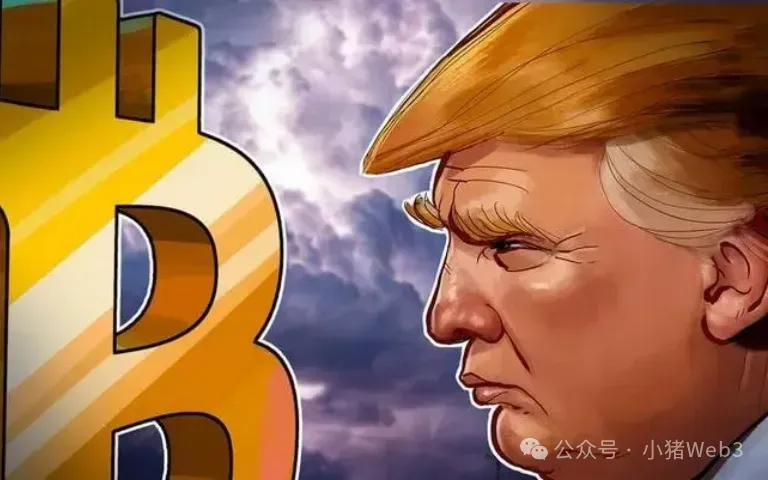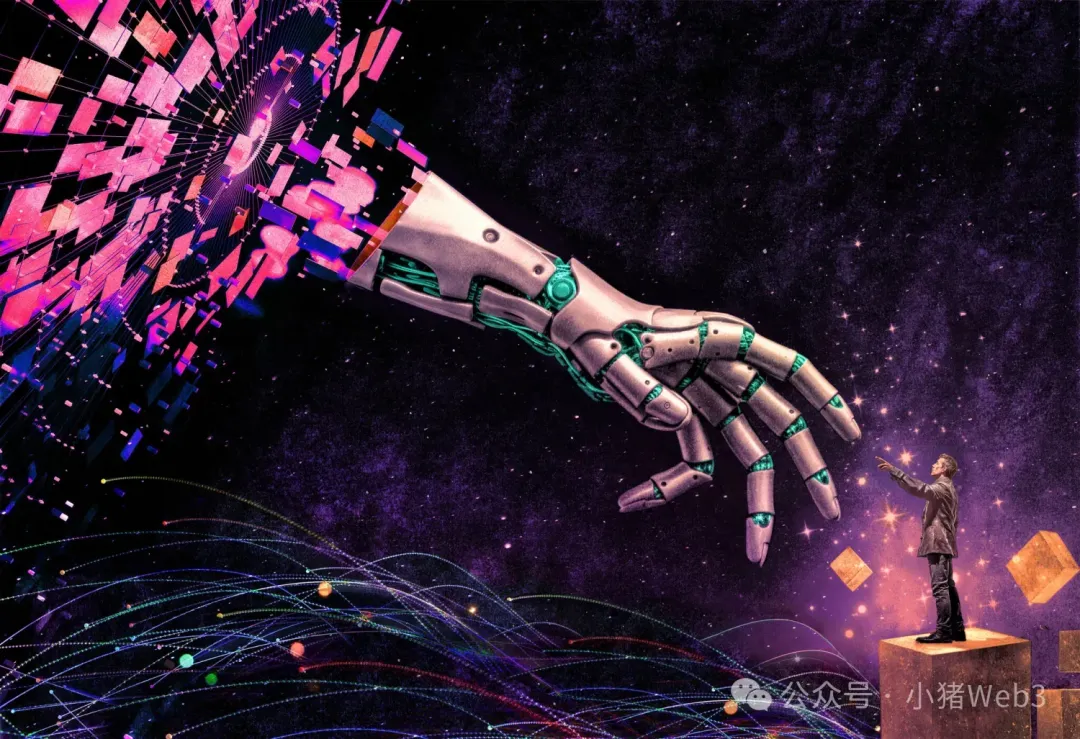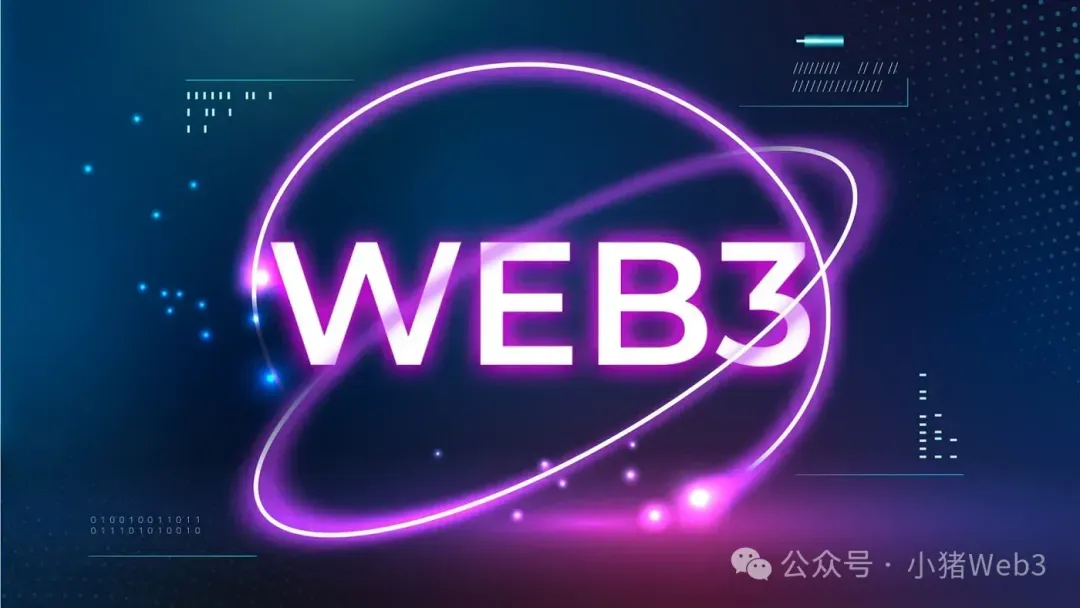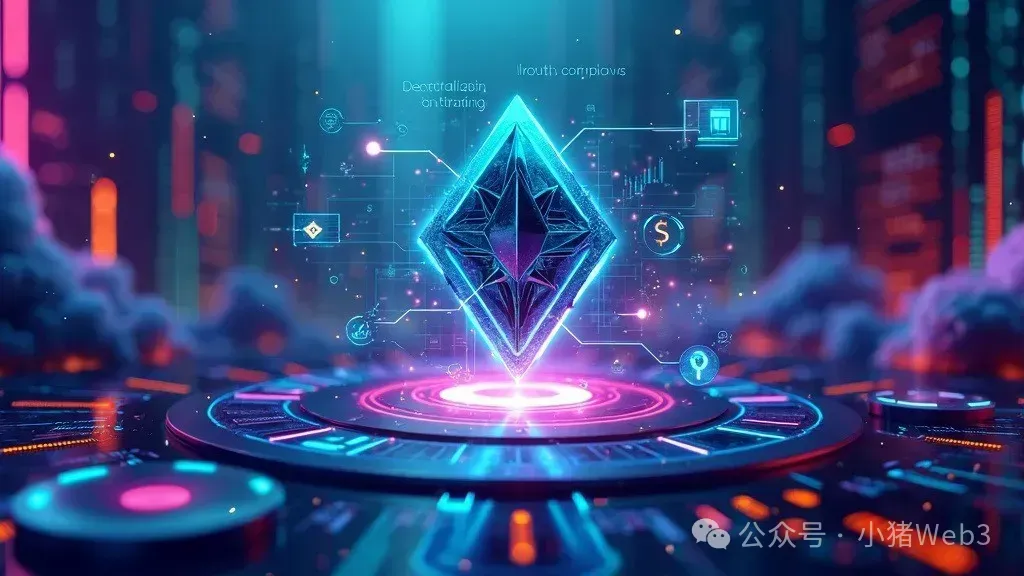Trump: Make Bitcoin Great Again

On the evening of November 6, Beijing time, the results of the 2024 US presidential election were announced. Republican candidate Donald Trump defeated Democratic candidate Kamala Devi Harris and was successfully elected as the 47th President of the United States.
Cryptocurrency is considered part of the "Trump deal". During the campaign, Trump repeatedly expressed his favor for Bitcoin and cryptocurrency. He publicly promised to establish a US strategic reserve of Bitcoin and proposed to set up a special cryptocurrency policy working group called the "Presidential Advisory Committee on Bitcoin and Cryptocurrency". In addition, Trump also emphasized the protection of Americans' free control over crypto assets, believing that their innovative spirit and autonomy are in line with the core values of the United States, and plans to support cryptocurrencies in the form of policies to enable the United States to take a leading position in global Bitcoin and blockchain technology.
With Trump's victory, the crypto market was completely ignited, and Bitcoin also ushered in a stronger upward trend, continuously breaking historical highs, and breaking through $93,000 on the evening of November 13, which was also the first time that Bitcoin had ever reached the $90,000 mark. It hit the $100,000 mark in the following days.
However, compared to the "surging" Bitcoin, most other cryptocurrencies (altcoins) have reacted relatively coldly. Bitcoin has absorbed most of the funds flowing into the crypto asset sector, but there has been no clear improvement in the liquidity of altcoins, and the capital linkage between altcoins and Bitcoin has become increasingly weak.
Bitcoin is the first peer-to-peer cryptocurrency system based on blockchain technology, and Web3 is a more extensive application of blockchain technology on the Internet. However, the biggest question about Web3 is that it has no application ecosystem, only economic tokens for applications, which are ordinary altcoins.
Trump's coming to power is expected to further attract more financial institutions to buy Bitcoin through ETFs, making Bitcoin great again. However, these financial institutions do not seem to be interested in altcoins that are more narrative than practical, but are dressed in the guise of Web3. Without the inflow of OTC funds, the speculative interest in altcoins will be difficult to sustain. Altcoins are still waiting for a long season, and Web3 is bound to be on the eve of change.
Web3 is still waiting for the singularity moment

The singularity moment is a hypothetical point in time at which the growth of technology becomes uncontrollable and irreversible, leading to unforeseen changes in human civilization. The singularity moment usually describes disruptive technological changes that have a profound impact on human society, such as the moment when the iPhone was launched or the moment when the World Wide Web was invented.
Looking back at 2021, Web3 and AI are both hot topics in the technology circle, and both are expected to give birth to a singularity moment. Web3 represents a newer and better vision of the Internet, returning power to users in the form of ownership through blockchain, cryptocurrency and NFT. At that time, blockchain Layer1 and DeFi projects emerged in an endless stream, and cryptocurrency and NFT became the most sought-after investments. The price of Bitcoin also reached $69,000 in November, reaching the high point of the previous bull market.
However, all the greed and prosperity of cryptocurrencies and NFTs collapsed in 2022, while AI ushered in the singularity moment of the development of general AI in November 2022-"ChatGPT". According to a report by UBS Group, only two months after OpenAI launched "ChatGPT", the number of users exceeded 100 million, making it the fastest growing consumer application in history. The emergence of "ChatGPT" is considered by the industry to be a disruptive technological change.
This year's Nobel Prize, AI is the biggest winner, the three major scientific awards, the physics prize and the chemistry prize, are all related to AI research. In particular, half of the Nobel Prize in Chemistry was jointly awarded to Demis Hassabis and John M. Jumper of DeepMind, an artificial intelligence company under Google, in recognition of their contributions to protein structure prediction. It can be said that it was awarded to AI for Science. AI has become an important tool for solving long-standing complex scientific problems and has profoundly affected human society.
From OpenAI launching "ChatGPT" to the Nobel Prize in Chemistry being awarded to AI for Science, it reflects the unparalleled influence of AI technology and indicates that mankind is at the dawn of the AI era. However, Web3, which was still on par with AI a few years ago, seems to be silent in the long night, still waiting for the singularity moment belonging to Web3.

The blockchain technology underlying Web3 is indeed a disruptive technological change that reshapes the trust model. The decentralization, immutability and transparency of blockchain have built a trust mechanism based on mathematical algorithms and cryptographic principles, allowing the two parties to a transaction to interact directly without relying on the endorsement of a third-party institution, thereby reducing the cost of trust and improving the efficiency and reliability of trust.
However, blockchain as a disruptive technology is different from many other technologies for two main reasons. First, because of its potential for tokenization, it naturally enters the financial sector - a highly regulated sector in most countries. Second, blockchain is a back-end infrastructure technology, similar to cloud computing, and does not have a prominent C-end user-oriented attribute.
The development of blockchain has started since the advent of Bitcoin in 2009. Except for the DeFi applications represented by Uniswap in 2020, all innovations have come from the infrastructure (or protocol layer), such as Ethereum, IPFS, ZK Layer2, high-performance Layer1 represented by Solana and Sui, and asynchronous Layer1 represented by TON and AO.
From the perspective of technological development, the protocol layer is indeed one of the most important technical directions of blockchain. However, various technical solutions including blockchain expansion technology, high-performance computing technology, and zero-knowledge proof technology have matured, but there has been no major innovation in the application layer after DeFi. Without the flowers of application, the protocol becomes a blank flowerbed. If there is no large-scale adoption of users at the application layer, Web3 will not usher in the singularity moment.
According to the latest data from Coingecko, the total market value of the entire cryptocurrency is about 3.4 trillion US dollars, the market value of the protocol layer is 2.9 trillion US dollars (including 2 trillion US dollars for Bitcoin), and the market value of the application layer is only about 200 billion US dollars (excluding stablecoins and memes), while NVIDIA, a giant in AI chips, has a market value of 3.5 trillion US dollars. If there is no large-scale inflow of funds at the application layer, Web3 will not usher in the singularity moment.
Why RWA

RWA, the full name of which is Real World Assets, literally means "real-world assets", which refers to the tokenization of real-world assets in the blockchain or Web3 ecosystem. These assets can theoretically cover almost all known categories, including tangible assets (real estate, commodities, artworks, etc.) and intangible assets (financial assets, AI computing power, carbon credits, etc.).
So why is RWA the singularity moment of Web3? First of all, RWA can meet the adoption of billions of users and the scale of trillions of market value , which is not available in other applications in the Web3 field. Secondly, RWA is an exploration of the Web3 application layer by government agencies, mainstream institutions, and traditional financial giants , which is also not available in the relatively niche Web3 native applications in the past.
For example, in March 2024, BlackRock launched BUIDL, the first tokenized fund issued on a public chain; other financial giants such as HSBC, Fidelity, JPMorgan Chase and Citigroup are also exploring tokenized government bonds; the Hong Kong SAR government issued government-backed green bonds on the blockchain; Ant Digits and Longsun Technology cooperated to complete the country's first RWA project based on new energy physical assets in Hong Kong.
And there is another surprising fact. The catalyst of this bull market, the Bitcoin spot ETF, is driven by traditional financial giants represented by BlackRock. Recalling the catalyst of the last bull market, "DeFi Summer", it can be judged that traditional financial giants are a pillar force in this bull market.
If the approval of the Bitcoin spot ETF can include cryptocurrency as a new type of asset into the investment field of the vast number of compliant funds, it is a recognition of cryptocurrency as a type of asset. The greater significance of RWA is that it is the path with the least compliance risk for traditional financial giants to enter the Web3 world, heralding a major transformation in the financial industry and indicating that blockchain technology is being increasingly adopted to improve the efficiency and accessibility of the capital market.

Currently, major public chains are also actively building the RWA narrative. For example, Ethereum's new RWA token standard ERC-3643; Solana launched PayFi to introduce RWA and establish a programmable payment system; AO launched FusionFi to support seamless migration of financial services in the real world, breaking the boundary between financial services in the real world and the crypto world; Avalanche launched the Evergreen subnet to meet the customized requirements of institutional companies for financial services, and launched the Vista Fund for the RWA field; Pharos announced a strategic partnership with ZAN (Ant Digital Technology's Web3 brand) to connect traditional financial technology with Web3 technology, focusing on real-time payments and RWA applications.
The main problem with the tokenization of RWA assets is the lack of unified classification or classification standards worldwide, as well as the fragmented legal regulatory environment for digital assets in different jurisdictions. However, for some standard financial products, such as stocks, ETFs, and bonds, there are relatively standardized on-chain processes, and their market size is already large enough. The biggest obstacle to the scale of RWA assets is how to enter the "regulated DeFi".
Because RWA involves the tokenization (securitization) of assets and the sale of financial products, it must be regulated by the financial industry to which the real-world assets belong. Unlike native DeFi, which has no access, assets are kept by smart contracts, and are governed by DAO organizations, regulated DeFi emphasizes that assets are kept by regulated financial institutions, KYC/AML is performed through digital identities, and governance is carried out by specialized organizations and professionals.
This is why RWA is resisted by "decentralization-only" fundamentalists, but I believe that the proper introduction of "centralization" can achieve broader financial inclusion and reduce costs and increase efficiency. Although the DeFi protocol is operated by regulated financial institutions, as long as the transparency of supervision is strengthened, and the risk of human intervention is reduced through the automatic execution of smart contracts, and all RWA transactions are ensured to be transparent, secure and verifiable, it will be possible to guarantee "autonomy", enhance market trust, and promote the integration of RWA and DeFi.
Here is another digression. Most of the DeFi protocols and DAO organizations on the chain that hold high the banner of "decentralization" are actually extremely centralized. For example, the governance tokens are in the hands of a small number of people. Some even do not have a decentralized governance mechanism, but a multi-signature scheme controlled by a committee, and the information of the committee members is extremely opaque. The industry has turned a blind eye to this phenomenon, which has become the "elephant in the room."
Summarize
2024 is an important year for RWA to move from narrative to implementation. We can see that more and more government agencies, mainstream institutions, and traditional financial giants have begun to formulate a series of regulatory frameworks and explore RWA projects. Major public chains are also actively introducing RWA and institutional finance.
The past successful cases in the crypto industry all relied on native on-chain assets and lacked value anchoring. However, RWA brings the value of the real world to the chain. Although RWA cannot bring ultra-high gains to retail investors like native on-chain assets, it has attracted traditional financial giants to enter DeFi applications. In addition, RWA can bring credit enhancement and compliance to corporate financing, which will also benefit small and medium-sized enterprises.
Although RWA is regulated by real-world financial institutions and has stricter compliance requirements, which makes it seem a bit anti-decentralized, it has ushered in the era of real application of Web3 and is an important step for the maturity and expansion of blockchain technology.











